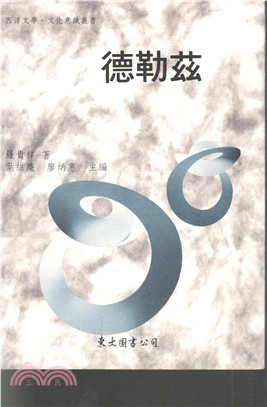固體量子化學:晶體的原子軌道線性組合第一性原理計算方法(簡體書)
- ISBN13:9787510042843
- 出版社:世界圖書(北京)出版公司
- 作者:(俄)R. A. 葉瓦列斯托夫
- 裝訂:平裝
- 出版日:2012/03/01
商品簡介
讀者對象:凝聚態物理、材料科學和量子化學等專業的高年級本科生、研究生和相關專業的科研人員。
目次
1 introduction
2 space groups and crystalline structures
2.1 translation and point symmetry of cryst&lz
2.1.1 symmetry of molecules and crystals: similarities and differences
2.1.2 translation symmetry of crystals. point symmetry of bravais lattices. crystal class
2.2 space groups
2.2.1 space groups of brawis lattices. symmorphic and nonsymmorphic space groups
2.2.2 three-periodic space groups
2.2.3 site symmetry in crystals. wyckoff positions
2.3 crystalline structures
2.3.1 crystal-structure types. structure information for computer codes
2.3.2 cubic structures: diamond, rocksalt, fluorite, zincblende, cesium chloride, cubic perovskite
2.3.3 tetragonoj structures: rutile, anatase and la~cuo4
2.3.4 orthorhombic structures: lamno3 and yba2cuso?
2.3.5 hexagonal and trigonal structures: graphite, wurtzite, corundum and scmno3
3 symmetry and localization of crystalline orbitals
3.1 translation and space symmetry of crystalline orbitals.bloch functions
3.1.1 symmetry of molecular and crystalline orbitals
3.1.2 irreducible representations of translation group. brillouin zone
3.1.3 stars of wavevectors. little groups. fhll representations of space groups
3.1.4 small representations of a little group. projective representations of point groups
3.2 site symmetry and induced representations of space groups
3.2.1 induced representations of point groups. localized molecular orbitals
3.2.2 induced representations of space groups in q-basis
3.2.3 induced representations of space groups in k-basis.band representations
3.2.4 simple and composite induced representations
3.2.5 simple induced representations for cubic space groups ok, and
3.2.6 symmetry of atomic and crystalline orbitals in mgo, si and srzro3 crystals
3.3 symmetry of localized crystalline orbitals. wannier functions
3.3.1 symmetry of localized orbitals and band representations of space groups
3.3.2 localization criteria in wannier-function generation
3.3.3 localized orbitals for valence bands: lcao approximation
3.3.4 variational method of localized wannier-function generation on the base of bloch functions
4 hartree-fock lcao method for periodic systems
4.1 one-electron approximation for crystals
4.1.1 one-electron and one-determinant approximations for molecules and crystals
4.1.2 symmetry of the one-electron approximation hamiltonian
4.1.3 restricted and unrestricted hartree-fock lcao methods for molecules
4.1.4 specific features of the hartree-fock method for a cyclic model of a crystal
4.1.5 restricted hartree-fock lcao method for crystals
4.1.6 unrestricted and restricted open-shell hartree-fock methods for crystals
4.2 special points of brillouin zone
4.2.1 superceus of three-dimensional bravais lattices
4.2.2 special points of brillouin-zone generating
4.2.3 modification of the monkhorst-pack special-points meshes
4.3 density matrix of crystals in the hartree-fock method
4.3.1 properites of the one-electron density matrix of a crystal
4.3.2 the one-electron density matrix of the crystal in the lcao approximation
4.3.3 interpolation procedure for constructing an approximate density matrix for periodic systems
5 electron correlations in molecules and crystals
5.1 electron correlations in molecules: post-hartree-fock methods
5.1.1 what is the electron correlation ?
5.1.2 configuration interaction and multi-configuration self-consistent field methods
5.1.3 coupled-cluster methods
5.1.4 many-electron perturbation theory
5.1.5 local electron-correlation methods
5.2 incremental scheme for local correlation in periodic systems
5.2.1 weak and strong electron-correlation
5.2.2 method of incfements: ground state
5.2.3 method of increments: valence-band structure and bandgap
5.3 atomic orbital laplace-transformed mp2 theory for periodic systems
5.3.1 laplace mp2 for periodic systems: unit-cell correlation energy
5.3.2 laplace mp2 for periodic systems:bandgap
5.4 local mp2 electron-correlation method for nonconducting crystals
5.4.1 local mp2 equations for periodic systems
5.4.2 fitted wannier functions for periodic local correlation methods
5.4.3 symmetry exploitation in local mp2 method for periodic systems
6 semiempirical lcao methods for molecules and periodic systems
6.1 extended h/ickel and mulliken-r/idenberg approximations
6.1.1 nonself-consistent extended h/ickel-tight-binding method
6.1.2 iterative mulliken-r/idenberg method for crystals
6.2 zero-differential overlap approximations for molecules and crystals
6.2.1 zero-differential overlap apl~roximations for molecules
6.2.2 complete and intermediate neglect of differential overlap for crystals
6.3 zero-differential overlap approximation in cyclic-cluster model
6.3.1 symmetry of cyclic-cluster model of perfect crystal
6.3.2 semiempirical lcao methods in cyclic-cluster model
6.3.3 implementation of the cyclic-clnster model in msindo and hartree-fock lcao methods
7 kohn-sham lcao method for periodic systems
7.1 foundations of the density-functional theory
7.1.1 the basic formulation of the density-functional theory
7.1.2 the kohn-sham single-particle equations
7.1.3 exchange and correlation functionals in the local density approximation
7.1.4 beyond the local density approximation
7.1.5 the pair density. orbital-dependent exchange-correlation functionals
7.2 density-functional lcao methods for solids
7.2.1 implementation of kohn-sham lcao method in crystals calculations
7.2.2 linear-scaling dft lcao methods for solids
7.2.3 heyd-scnseria-ernzerhof screened coulomb hybrid functional
7.2.4 are molecular exchange-correlation functionals transferable to crystals?
7.2.5 density-functional methods for strongly correlated systems: sic dft and dft+u approaches part ii applications
basis sets and pseudopotentlals in periodic lcao calculations
8.1 basis sets in the electron-structure calculations of crystals
8.1.1 plane waves and atomic-like basis sets. slater-type functions
8.1.2 molecular basis sets of gaussian-type functions
8.1.3 molecular basis sets adaptation for periodic systems
8.2 nonrelativistic effective core potentials and valence basis sets
8.2.1 effective core potentials: theoretical grounds
8.2.2 gaussian form of effective core potentials and valence basis sets in periodic lcao calculations
8.2.3 separable embedding potential
8.3 relativistic effective core potentials and valence basis sets
8.3.1 relativistic electronic structure theory: dirac-hartree-fock and dirac-kohn-sham methods for molecules
8.3.2 relativistic effective core potentials
8.3.3 one-center restoration of electronic structure in the core region
8.3.4 basis sets for relativistic calculations of molecules
8.3.5 relativistic lcao methods for periodic systems lcao calculations of perfect-crystal properties
9.1 theoretical analysis of chemical bonding in crystals
9.1.1 local properties of electronic structure in lcao hf and dft methods for crystals and post-hf methods for molecules
9.1.2 chemical bonding in cyclic-cluster model: local properties of composite crystalline oxides
9.1.3 chemical bonding in titanium oxides: periodic and molecular-crystalline approaches
9.1.4 wannier-type atomic functions and chemical bonding in crystals
9.1.5 the localized wannier functions for valence bands: chemical bonding in crystalline oxides
9.1.6 projection technique for population analysis of atomic orbitals. comparison of different methods of the chemical- bonding description in crystals
9.2 electron properties of crystals in lcao methods
9.2.1 one-electron properties: band structure, density of states, electron momentum density
9.2.2 magnetic structure of metal oxides in lcao methods: magnetic phases of lamnos and scmno3 crystals
9.3 total energy and related observables in lcao methods for solids
9.3.1 equilibrium structure and cohesive energy
9.3.2 bulk modulus, elastic constants and phase stability of solids: lcao ab-initio calculations
9.3.3 lattice dynamics and lcao calculations of vibrational frequencies
10 modeling and lcao calculations of point defects in crystals
10.1 symmetry and models of defective crystals
10.1.1 point defects in solids and their models
10.1.2 symmetry of supercell model of defective crystals
10.1.3 supercell and cyclic-clnster models of neutral and charged point defects
10.1.4 molecular-cluster models of defective solids
10.2 point defects in binary oxides
10.2.1 oxygen interstitials in magnesium oxide: supercell lcao calculations
10.2.2 neutral and charged oxygen vacancy in a1203 crystal: supercell and cyclic-clnster calculations
10.2.3 supercell modeling of metal-doped rutile tio2
10.3 point defects in perovskites
10.3.1 oxygen vacancy in srtio3
10.3.2 superceu model of fe-doped srtio3
10.3.3 modeling of solid solutions of lacsrl-cmno3
11 surface modeling in lcao calculations of metal oxides
11.1 diperiodic space groups and slab models of surfaces
11.1.1 diperiodic (layer) space groups
11.1.2 oxide-surface types and stability
11.1.3 single- and periodic-slab models of mgo and tio2 surfaces
11.2 surface lcao calculations on tio2 and sno2
11.2.1 cluster models of (110) tio2
11.2.2 adsorption of water on the tio2 (rutile) (110) surface: comparison of periodic lcao-pw and embedded-cluster lcao calculations
11.2.3 single-slab lcao calculations of bare and hydroxylated sno2 surfaces
11.3 slab models of srtio3, srgro3 and lamno3 surfaces
11.3.1 hybrid hf-dft comparative study of srzro3 and srtio3 (001) surface properties
11.3.2 f center on the srtio3 (001) surface
11.3.3 slab models of lamno3 surfaces
a matrices of the symmetrical supercell transformations of 14 three-dimensional bravais lattices breciprocal matrices of the symmetric supercell transformations of the three cubic bravais lattices c computer programs for periodic calculations in basis of localized orbitals
references
index
主題書展
更多主題書展
更多書展本週66折
您曾經瀏覽過的商品
購物須知
大陸出版品因裝訂品質及貨運條件與台灣出版品落差甚大,除封面破損、內頁脫落等較嚴重的狀態,其餘商品將正常出貨。
特別提醒:部分書籍附贈之內容(如音頻mp3或影片dvd等)已無實體光碟提供,需以QR CODE 連結至當地網站註冊“並通過驗證程序”,方可下載使用。
無現貨庫存之簡體書,將向海外調貨:
海外有庫存之書籍,等候約45個工作天;
海外無庫存之書籍,平均作業時間約60個工作天,然不保證確定可調到貨,尚請見諒。
為了保護您的權益,「三民網路書店」提供會員七日商品鑑賞期(收到商品為起始日)。
若要辦理退貨,請在商品鑑賞期內寄回,且商品必須是全新狀態與完整包裝(商品、附件、發票、隨貨贈品等)否則恕不接受退貨。

























